
Herbivore dinosaurs, a captivating ensemble of ancient beings, have long intrigued generations with their plant-based diets. Thriving during the Mesozoic Era, these herbivorous creatures showcased a remarkable diversity, boasting an array of adaptations tailored for consuming vegetation. Spanning various groups such as sauropods, ornithischians, and select theropods, they left an indelible mark on prehistory. Among the most renowned herbivorous dinosaurs are Triceratops, Stegosaurus, and Brachiosaurus.
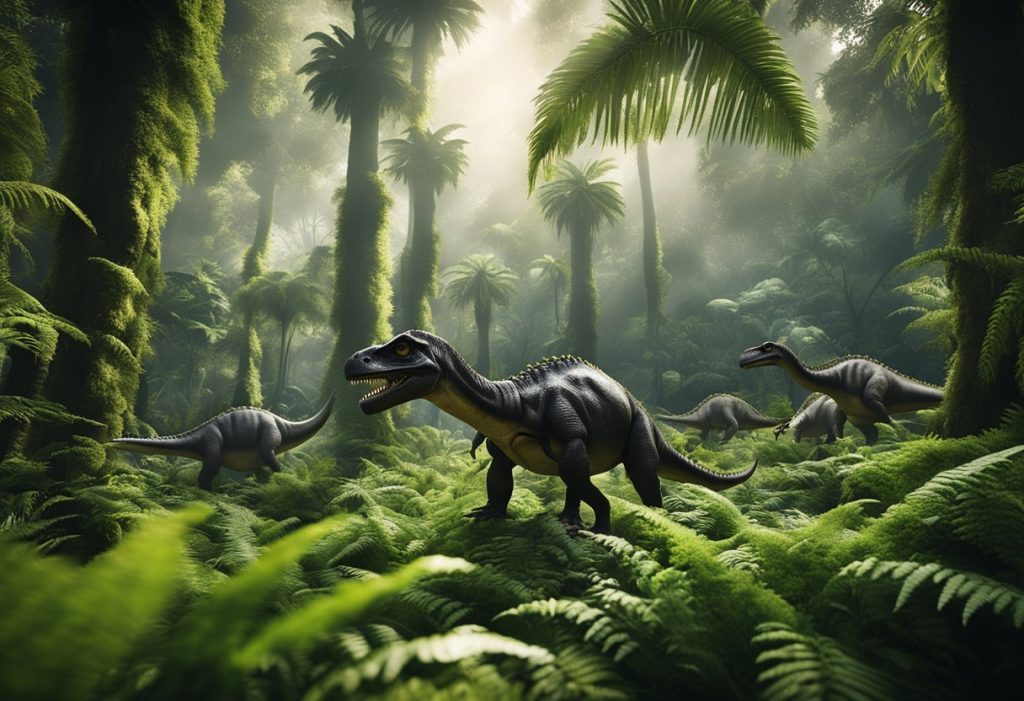
One intriguing aspect of herbivore dinosaurs is their evolutionary adaptation to a plant-based diet. In contrast to carnivorous counterparts, herbivores developed specialized teeth and digestive systems to process tough plant material. For instance, sauropods like Brachiosaurus evolved long necks to reach high into trees for leaves, while hadrosaurs like Parasaurolophus possessed flat teeth ideal for grinding tough plant fibers. These adaptations facilitated the success of herbivore dinosaurs, making them dominant creatures of their era.
Today, ongoing scientific research delves into herbivore dinosaurs, aiming to unravel their behaviors, evolutionary paths, and unique adaptations. Through the analysis of fossilized remains and anatomical studies, scientists reconstruct the diets and lifestyles of these intriguing creatures. This article embarks on an exploration of renowned herbivore dinosaurs, shedding light on their adaptations and the insights they offer into the evolution of life on Earth.
Herbivore Dinosaur Evolution
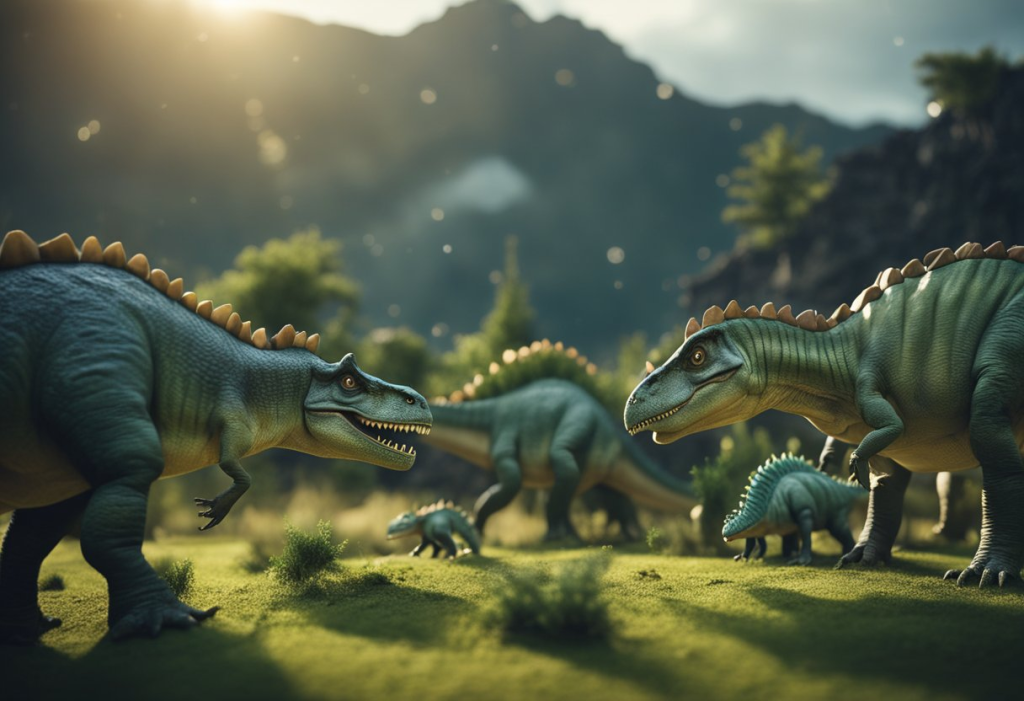
Triassic Period Origins
Herbivorous dinosaurs made their debut during the Triassic period approximately 230 million years ago. Initially small and lacking specialization, they subsisted on ferns and other primitive vegetation. Over time, these dinosaurs underwent evolutionary changes, acquiring specialized teeth and jaws to handle more resilient plant matter. By the conclusion of the Triassic period, herbivorous dinosaurs had diversified into various groups, such as sauropods and ornithischians.
Jurassic to Cretaceous Development
Throughout the Jurassic and Cretaceous periods, herbivorous dinosaurs underwent further evolution and diversification. Sauropods like Diplodocus and Brachiosaurus reached immense sizes, evolving elongated necks and tails to access high vegetation. Ornithischians such as Triceratops and Stegosaurus developed intricate jaw structures to process tough plant matter.
Despite their achievements, herbivorous dinosaurs faced extinction by the close of the Cretaceous period, alongside all other dinosaur species. Nevertheless, their legacy persists through modern-day birds, descendants of small, feathered theropod dinosaurs.
Characteristics of Herbivore Dinosaurs
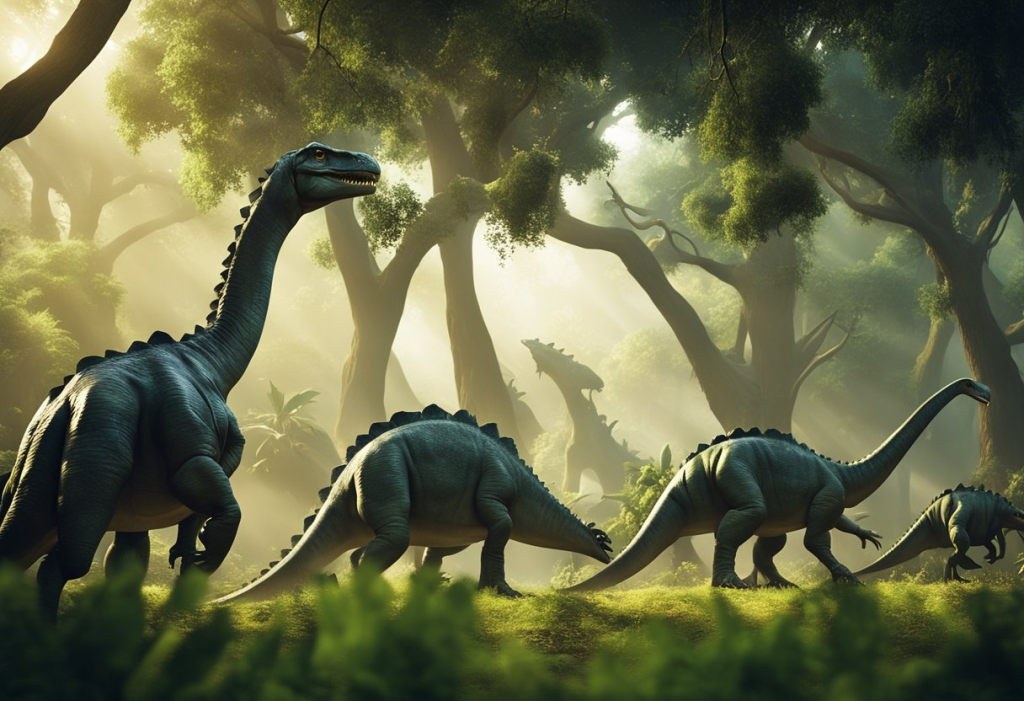
Dietary Adaptations
Herbivore dinosaurs in the Mesozoic Era evolved various adaptations for consuming vegetation. Their teeth and jaws, neck length, and anatomical features like beaks enabled them to feed on a range of plant materials including young shoots, ferns, tree leaves, and tougher resources like fruits, pineapples, or needle leaves. With flowers, grass, and fleshy fruits absent during this era, their diet comprised bark, leaves, and soft twigs.
Physical Features
Herbivore dinosaurs encompassed a diverse array of species, each with uniquely shaped teeth and jaws suited to their dietary preferences. These dinosaurs boasted elongated necks and tails, facilitating access to high branches and leaves. Strong legs provided support and mobility, while some featured armor plates or spikes for defense against predators. Others sported long, sharp claws, utilized both for self-defense and foraging.
Defense Mechanisms
Herbivorous dinosaurs employed a range of defense mechanisms to ward off predators. Some featured armor plates or spikes for protection, while others relied on long, sharp claws for defense and foraging. Species like Triceratops utilized head horns for charging at predators, while Stegosaurus raised bony plates on their backs as a deterrent. Additionally, some herbivores formed herds, bolstering their defense by increasing numbers and collective vigilance against predators.
Famous Herbivore Species
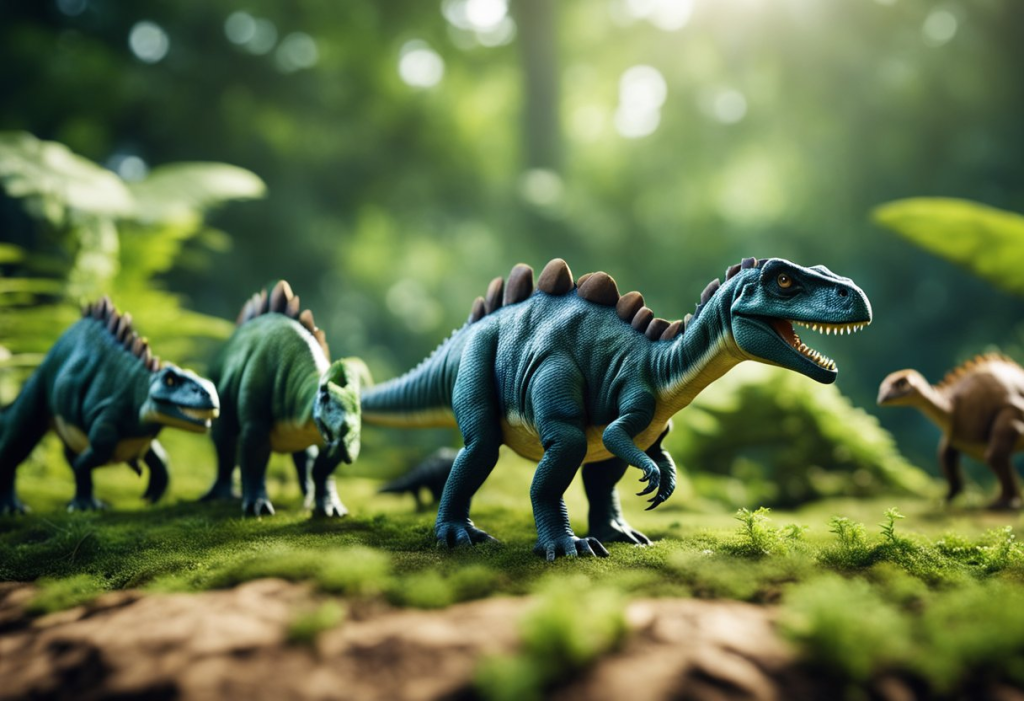
Triceratops
Triceratops, a renowned herbivore dinosaur, roamed North America during the late Cretaceous period. Its name, derived from Greek, translates to “three-horned face,” denoting the three prominent horns adorning its skull. With a colossal body reaching lengths of up to 30 feet and weighing up to 12 tons, Triceratops moved on all fours and possessed a beak-like mouth adapted for plant consumption.
Stegosaurus
Stegosaurus, a herbivorous dinosaur native to North America, thrived during the late Jurassic period. Its distinctive feature was the large bony plates adorning its back, hypothesized to serve either for thermoregulation or defense against predators. With a diminutive head and a lengthy tail tipped with spikes, Stegosaurus moved on all fours and could reach lengths of up to 30 feet, weighing as much as 5 tons.
Brachiosaurus
Brachiosaurus, an immense herbivorous dinosaur, inhabited North America during the late Jurassic period. As a sauropod, it boasted an elongated neck, a lengthy tail, and a colossal body. Brachiosaurus could reach lengths of up to 85 feet and weigh as much as 80 tons. Featuring a small head and a beak-like mouth adapted for plant consumption, it utilized these features to feed on vegetation.
Ankylosaurus
Ankylosaurus, a herbivorous dinosaur native to North America, existed during the late Cretaceous period. Distinguished by its bony plates and spikes, speculated to serve as defense mechanisms against predators, Ankylosaurus possessed a stout, wide body and a small head with a beak-like mouth. Moving on all fours, it could reach lengths of up to 30 feet and weigh up to 6 tons.
Overall, these herbivorous dinosaurs stand out as some of the most renowned and captivating creatures to have traversed the earth. Their distinct physical traits and adaptations enabled them to flourish within their ecosystems, playing pivotal roles in their respective environments.
Herbivore Dinosaur Habitats
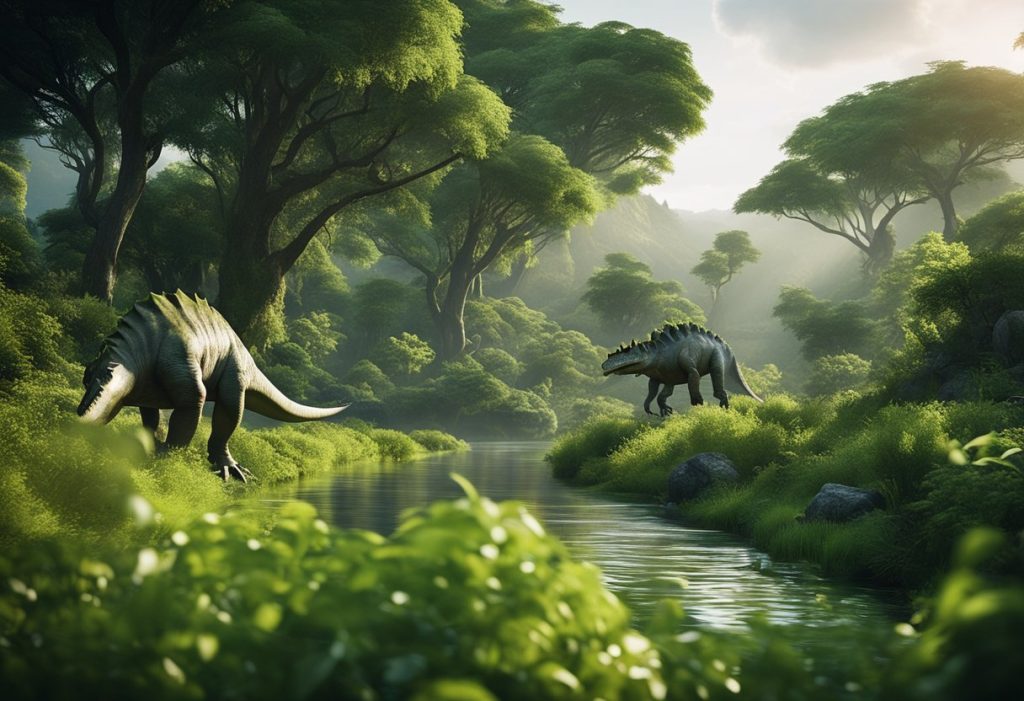
Geographical Distribution
Herbivore dinosaurs were widely distributed across the globe during the Mesozoic era. Fossil records show that herbivorous dinosaurs lived in various regions, including North America, South America, Europe, Asia, and Africa.
For instance, the Apatosaurus, which was a long-necked dinosaur, lived in North America, while the Brachiosaurus, one of the largest herbivorous dinosaurs, lived in Africa. Similarly, the Diplodocus lived in North America and Europe, while the Stegosaurus lived in North America and Europe.
Environmental Preferences
Herbivorous dinosaurs thrived in a diverse array of environments, ranging from forests and grasslands to swamps and wetlands. These habitats boasted lush vegetation and plentiful water sources, providing ideal conditions for herbivorous dinosaurs.
For instance, the forest-dwelling Stegosaurus, known for its distinctive plates, thrived amidst rich vegetation. Apatosaurus favored swampy regions, while Brachiosaurus preferred open grasslands. Triceratops, characterized by its horns, adapted to various environments, including forests and grasslands.
In summary, herbivorous dinosaurs occupied varied habitats worldwide, characterized by abundant vegetation and water sources, facilitating their flourishing.
Social Behavior and Herding
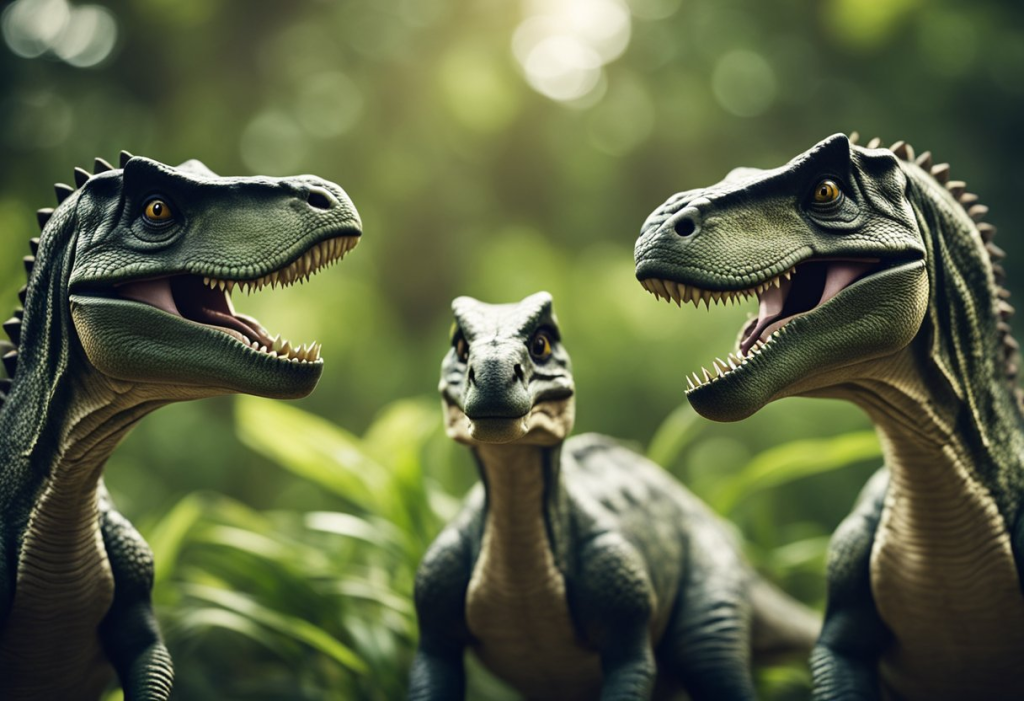
Herbivore dinosaurs are recognized for their social behavior and tendency to herd. These characteristics are thought to have developed as a survival strategy, enhancing their ability to defend against predators and locate food sources.
Pack Dynamics
Herbivore dinosaurs were commonly found in extensive packs or herds, comprising individuals of diverse ages and genders. The dynamics within these packs were intricate and diverse, varying among different species.
For instance, some herbivore dinosaurs like Mussaurus Patagonicus formed tightly bonded family groups. Conversely, species like Stegosaurus lived in larger herds consisting of individuals from various families.
Reproduction and Nesting
Herbivore dinosaurs displayed intricate reproductive and nesting behaviors. Females typically laid eggs in communal nests, often guarded by males. While females took turns incubating the eggs, males ventured out to forage for food.
After hatching, the juveniles remained with their parents and the rest of the herd for several years, learning vital survival skills from both adults and other pack members.
In summary, the social and herding behaviors of herbivore dinosaurs played a crucial role in their survival, aiding in protection from predators and food acquisition.
Fossil Evidence and Discoveries
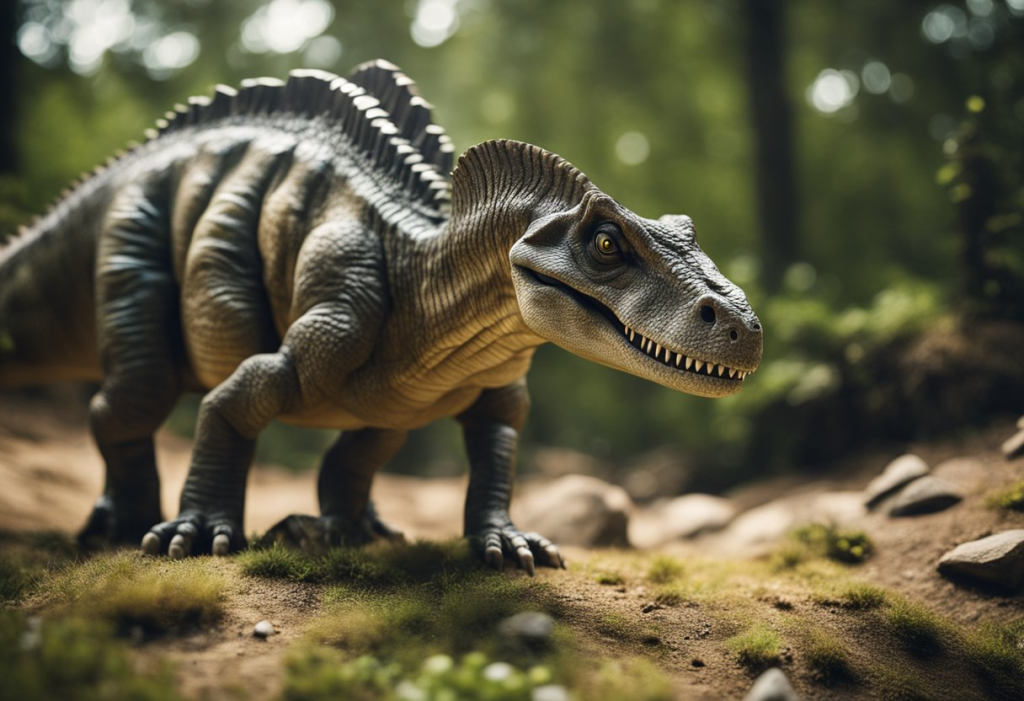
Major Fossil Sites
Paleontologists have unearthed fossil evidence of herbivore dinosaurs across the globe. Among the most prominent sites is Dinosaur Provincial Park in Alberta, Canada, where researchers have identified over 500 dinosaur species. This park boasts abundant fossils from the Late Cretaceous period, dating back approximately 75 million years. Other noteworthy locations include the Morrison Formation in the United States, the Nemegt Formation in Mongolia, and the Lourinhã Formation in Portugal.
Paleontological Techniques
Paleontologists employ various methods to examine herbivore dinosaur fossils. Excavation, a common technique, involves careful removal of fossils from the ground. Once unearthed, fossils undergo cleaning and preparation for further analysis. CT scans and X-rays are utilized to scrutinize fossils in detail, aiding in understanding the anatomy and behavior of herbivore dinosaurs.
Moreover, isotopic analysis is employed to discern the dietary habits of herbivore dinosaurs. This technique entails analyzing the chemical composition of fossils to determine their diet. For instance, researchers have identified ferns and conifers in the diets of certain herbivore dinosaurs.
In summary, fossil discoveries offer invaluable insights into the realm of herbivore dinosaurs. Through meticulous study and analysis, paleontologists continuously unearth new information about these intriguing creatures that once inhabited the earth.
Impact of Herbivore Dinosaurs on Ecosystems
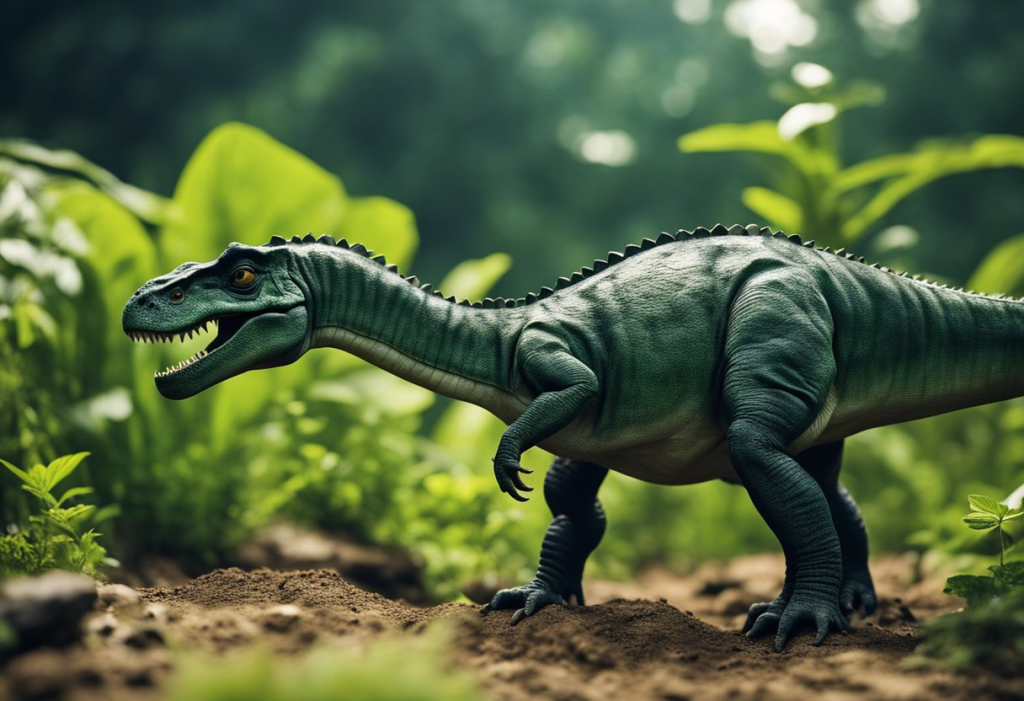
Herbivore dinosaurs exerted a significant influence on shaping the ecosystems of the Mesozoic era. These colossal plant-eating creatures played a vital role in maintaining the equilibrium of the food chain while profoundly impacting the evolution of plant life.
Through their consumption of vast amounts of vegetation, herbivore dinosaurs actively molded the structure of their habitats’ ecosystems. They were pivotal in regulating the growth and dispersion of plant species, thereby influencing the survival of other animals within the food chain.
Moreover, the evolutionary progression of herbivore dinosaurs directly influenced the development of plant life. As herbivores evolved novel methods of consuming vegetation, such as specialized digestive systems or grinding teeth, plants underwent adaptations to avoid consumption. This evolutionary interplay gave rise to new plant species with more resilient leaves or spines, subsequently shaping the evolution of herbivore dinosaurs.
In summary, the impact of herbivore dinosaurs on ecosystems was profound. Their role extended beyond shaping food chain dynamics to controlling plant species’ growth and distribution, ultimately influencing the evolution of both plant and animal life.
Extinction Events and Theories
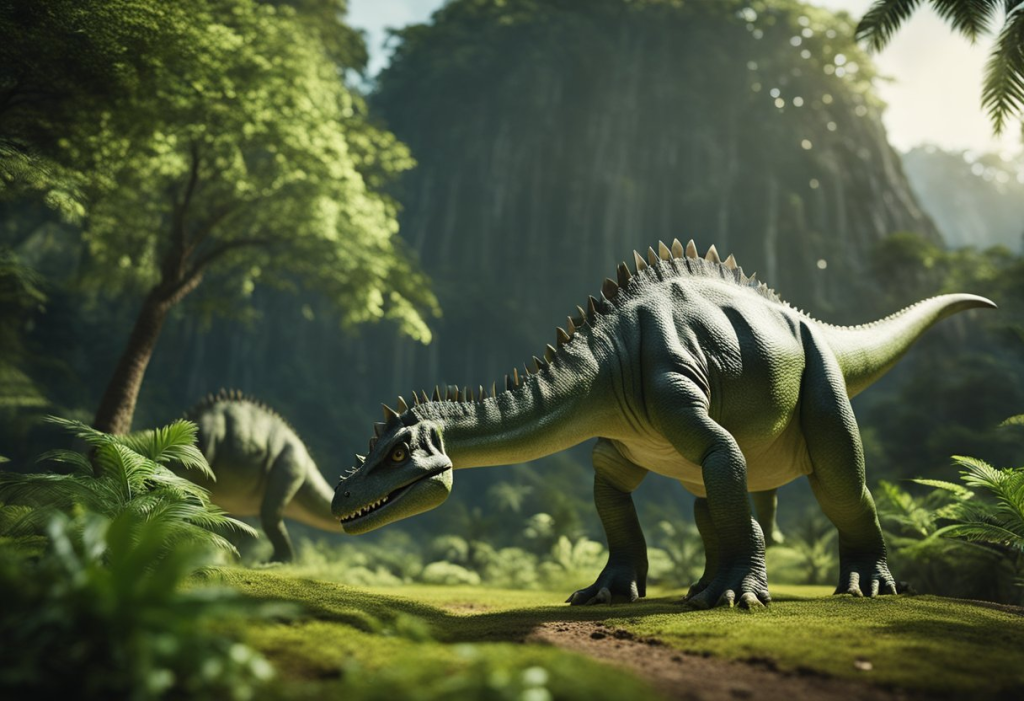
Cretaceous-Paleogene Extinction
One of the most renowned extinction events in history is the Cretaceous-Paleogene extinction, occurring roughly 66 million years ago. This event resulted in the demise of all non-avian dinosaurs, alongside numerous other species. Scientists attribute the extinction to a colossal asteroid impact, triggering a worldwide cataclysm and a prolonged period of darkness. Commonly referred to as the K-T extinction, it is thought to have transpired over several thousand years.
Other Contributing Factors
While the asteroid impact is believed to have been the primary cause of the Cretaceous-Paleogene extinction, other contributing factors likely played a role. Climate change, which had been ongoing for millions of years preceding the extinction event, may have been one such factor. The shifting climate could have led to the decline of some species and the emergence of others, potentially rendering certain species more susceptible to extinction.
Additionally, the proliferation of new species, such as mammals and birds, may have contributed to the dinosaurs’ demise. These species might have been better adapted to the changing environment, potentially outcompeting dinosaurs for resources. Furthermore, diseases and other environmental stressors may have also influenced dinosaur extinction, although their precise impact remains unclear.
In summary, the extinction of dinosaurs likely resulted from a complex interplay of factors, including the asteroid impact, climate change, the emergence of new species, and other environmental influences. While the specifics of the extinction event may never be fully elucidated, ongoing research into the fossil record and other evidence aims to provide a deeper understanding of this significant event in Earth’s history.

